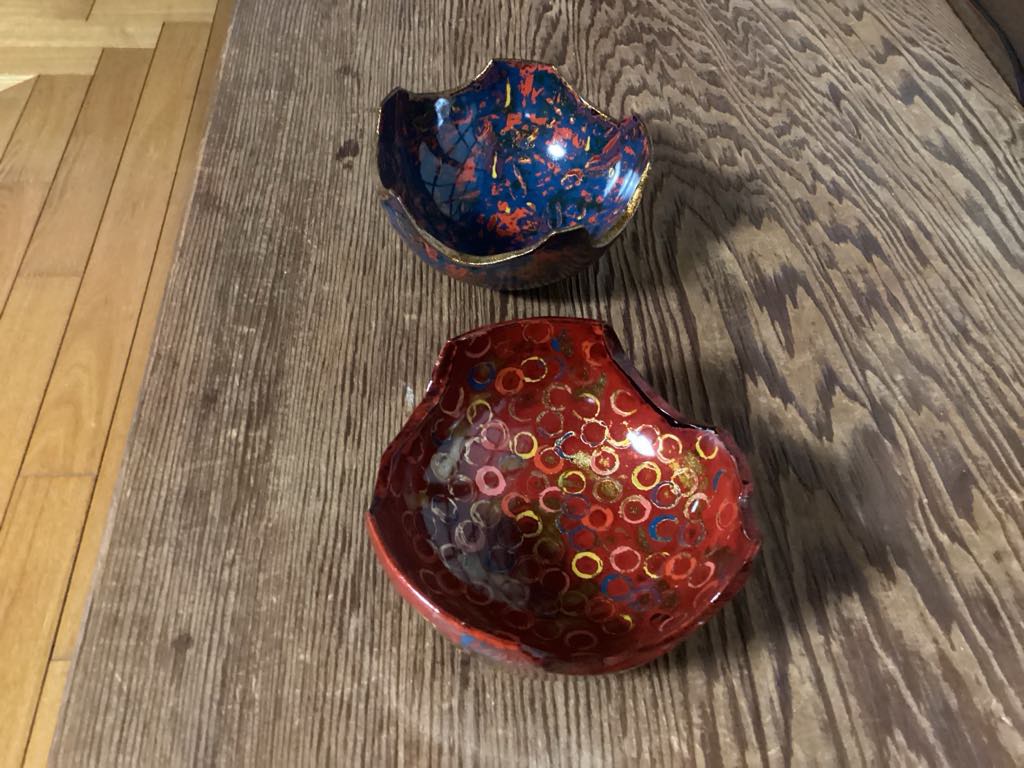
In Japan, I go back and forth between Tokyo and Kanagawa. While I often find Tokyo’s crowds exhausting, walking through the city offers plenty of stimulation and enjoyment.
Recently, there was an event held in a spacious area near my local station. On display were pieces of Aizu lacquerware, so captivating that I couldn’t help but stop in my tracks and admire them.
Below is the content transcribed from the pamphlet “Uruwashi no Sato: A Bookmark of Aizu Lacquerware.”
The renowned Aizu lacquerware (Aizu-nuri) in Japan traces its history back about 500 years to 1501, during the Muromachi period when the Ashina clan ruled the region.
Since then, the techniques have been handed down from generation to generation. In 1590 (Tenshō 18), under the leadership of the distinguished lord Gamo Ujisato, who was assigned to govern the Ōu Sendō region, special efforts were made to nurture this industry. It developed alongside the climate and natural conditions of Aizu.
In the late Tokugawa period, during the Matsudaira era, techniques for producing gold powder and gold leaf were introduced, along with keshifun maki-e (a technique using powdered gold designs). These developments led to the prosperity that continues today.
Aizu lacquerware has long been characterized by its luxurious and robust qualities. At the same time, it is notable for being primarily used for daily necessities. In many households, you can often find one or two pieces of Aizu lacquerware.
Most Aizu lacquerware is well-suited for daily use, employing a durable technique known as hana-nuri (flower lacquer). The items are finished with a soft, rounded, and warm appearance.
At the event, Aizu lacquerware, paulownia wood products, rice, and other items were on sale.
Paulownia wood production has been declining due to an aging population and a decreasing number of craftsmen. However, Oku-Aizu remains the leading producer of paulownia in Japan.
Aizu’s paulownia wood is slowly and naturally dried over a long period, crafted with great care and effort. It is not only high in quality but also retains its beautiful appearance while providing antibacterial, anti-corrosion, and insect-repellent properties.
Additionally, paulownia wood is fire-resistant, and there are stories of items stored inside paulownia chests surviving fires unscathed.
Learning about the reality that paulownia is gradually disappearing from Japan evokes indescribable feelings. Indeed, the era of including a luxurious paulownia chest of drawers as part of a bride’s dowry has long since passed.
Traditional crafts are built on a system of division of labor, with each artisan contributing their expertise to create a masterpiece.
I deeply admire the professional dedication of these artisans. Their unwavering drive to never settle for the status quo and to endlessly pursue the possibilities of their craft is truly inspiring.
Japan has been sustained by these dedicated artisans. There are things that can only be created by human hands—things that machines simply cannot replicate. However, many areas of craftsmanship are now facing the serious challenge of declining successors.
How can we preserve Japan’s traditional culture in the face of this reality?
At the event, I had the opportunity to sample a small amount of water infused with paulownia charcoal. It was tasteless, odorless, and easy to drink.
I only tried a little in the late afternoon, but that same evening, I was astonished to find that my digestion had improved unexpectedly.
While there are various types of charcoal products, such as bamboo and hemp charcoal, their quality and effectiveness vary. The detoxifying power of the paulownia charcoal I tried seemed remarkable.
I also heard stories about individuals with serious illnesses who experienced significant recovery after using paulownia charcoal.
What impressed me most was the person selling the product at the event—their skin was incredibly clear and beautiful. They mentioned that they used to have large blemishes on their face, but by drinking water with a tablespoon of paulownia charcoal every day, the blemishes disappeared. Their hands, too, were free of spots and radiantly smooth.
When it comes to detoxification, it might be worth trying this first, before turning to nutrient-rich supplements.
Some argue that if your kidneys are functioning properly, detoxification is unnecessary.
However, we live in a world where consuming unnatural substances has become commonplace. In particular, I’ve noticed that processed foods sold in Japan often contain a high number of additives. Whenever I return to Japan after some time away, I’m always shocked by how many additives are present in everyday food products.
I believe effective detoxification is essential.
In Japanese, we have the word deiri (出入り), meaning “exit and entry.” It’s never expressed as nyushutsu (入出); the focus is always on “exiting” first. That’s why I think removing unnecessary substances from the body should always come first.

Returning to the topic, my treasure is the Aizu lacquerware I fell in love with at first sight during the event I mentioned earlier.
When I left Japan 11 years ago, I disposed of all the expensive tableware and other cherished items I had accumulated over the years. At that time, I resolved to no longer cling to material possessions.
However, after so many years… I couldn’t help but want something again.
It was so beautiful and so moving that I couldn’t resist the thought that I might never encounter something like it again if I let this opportunity pass.
So this time, I decided to purchase it.
The bowl is unique—not perfectly round at the rim. But that imperfection feels profoundly artistic, perfectly matching the circular motifs and intricate colors of its design.
I plan to use it on special occasions, such as anniversaries, to add a touch of richness to everyday life. I will treasure it and use it with care.